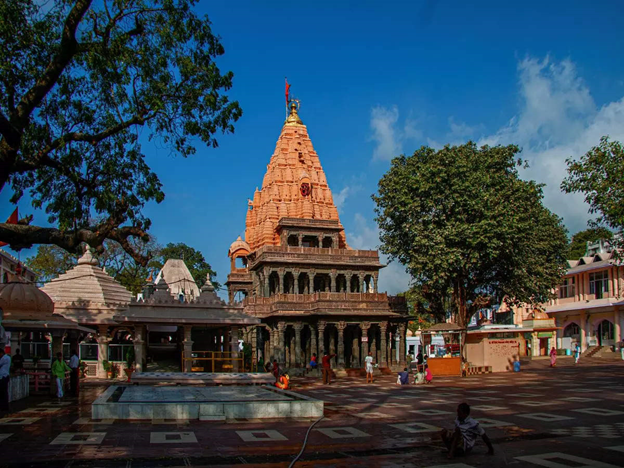

12th October 2022 (6 Topics)
Context

Prime Minister inaugurated the first phase of the ‘Shri Mahakaleswar Corridor’ in Ujjain, Madhya Pradesh.
About
About Mahakaleshwar Jyotirlinga
- The temple is located in the historical city of Ujjain in Madhya Pradesh, India. It is situated on the banks of the holy river, Shipra.
- Mahakal is the only jyotirlinga facing south; the rest face east. That is because the south is believed to be the direction of death.
- The jyotirlingas, or shrines, are believed to be the most sacred abodes of Shiva.
- Origin: The time of origin of the temple may be assigned to the pre-historic period as the Puranas say it was first established by Prajapita Brahma.
- Style: The Mahakaleshwar temple has been built in Maratha, Bhumija and Chalukya architectural styles.

What are Jyotirilingas?
- Jyotirlingas are sacred shrines of Lord Shiva; it is believed that Lord Shiva himself visited these places and hence they have a special place in the hearts of devotees.
- There are 12 of them in India.
- Jyotirlingameans ‘column or pillar of light’. The ‘stambha’ symbol represents that there is no beginning or end.
|
Other jyotirlinga sites:
|
Shri Mahakaleswar Corridor:
- It is the first phase of the Mahakaleshwar Temple corridor development project worth Rs856 crores.
- After completion will become one of the largest corridors in the country.
- The project spreads around the old Rudrasagar lake.
- The lake has also been redeveloped as part of the Mahakal River project.
- The project will not only bring a large number of devotees to Ujjain but will also make the city a global tourist destination.
Meaning of ‘Mahakal’, or ‘Mahakaleshwar’:
- The divinity associated with Ujjain is centered around the Mahakaleshwar Jyotirlinga placed inside the temple also known as Mahakal Mandir.
- The temple is dedicated to the Hindu deity Shiva, believed to be the god of time and death.
- He is called Mahakaleshwar, made up of the two meanings of the word Kaal – time and death.
Mention of Mahakal temple in ancient texts:
- In the early part of the Meghadutam (Purva Megha), Kalidasa describes the Mahakal temple.
- It is described as one with a stone foundation, with the ceiling on wooden pillars.
- There would be no shikharas or spires on the temples prior to the Gupta period.
About Ujjain:
- The city of Ujjain was also one of the primary centers of learning for Hindu scriptures, called Avantika in the 6th and 7th centuries BC.
- Astronomers and mathematicians such as Brahmagupta and Bhaskaracharya also made Ujjain their home.
- According to Surya Siddhanta (4th century), which is one of the earliest available texts on Indian astronomy, Ujjain is geographically situated at the intersection of zero meridians of longitude (Madhyarekha) and the Tropic of Cancer (Karkavrutta) intersect.
- This is the reason often sighted for it being connected to time and space, and the main Shiva temple is dedicated to Mahakal, the lord of time.
Developments in the Medieval Period:
- Islamic rulers gave donations to priests for offering prayers here.
- In the 13th century, the temple complex was destroyed by Turk ruler Shams-ud-din Iltutmish during his raid on Ujjain.
- The present five-storeyed structure was built by the Maratha general Ranoji Shinde in1734, in the Bhumija, Chalukya, and Maratha styles of architecture.
- About a century later, its marble walkways were restored by the Scindias.
- Maharaja Jai Singh II (18th century), known as the Vedh Shala or Jantar Mantar, comprises 13 architectural instruments to measure astronomical phenomena.


